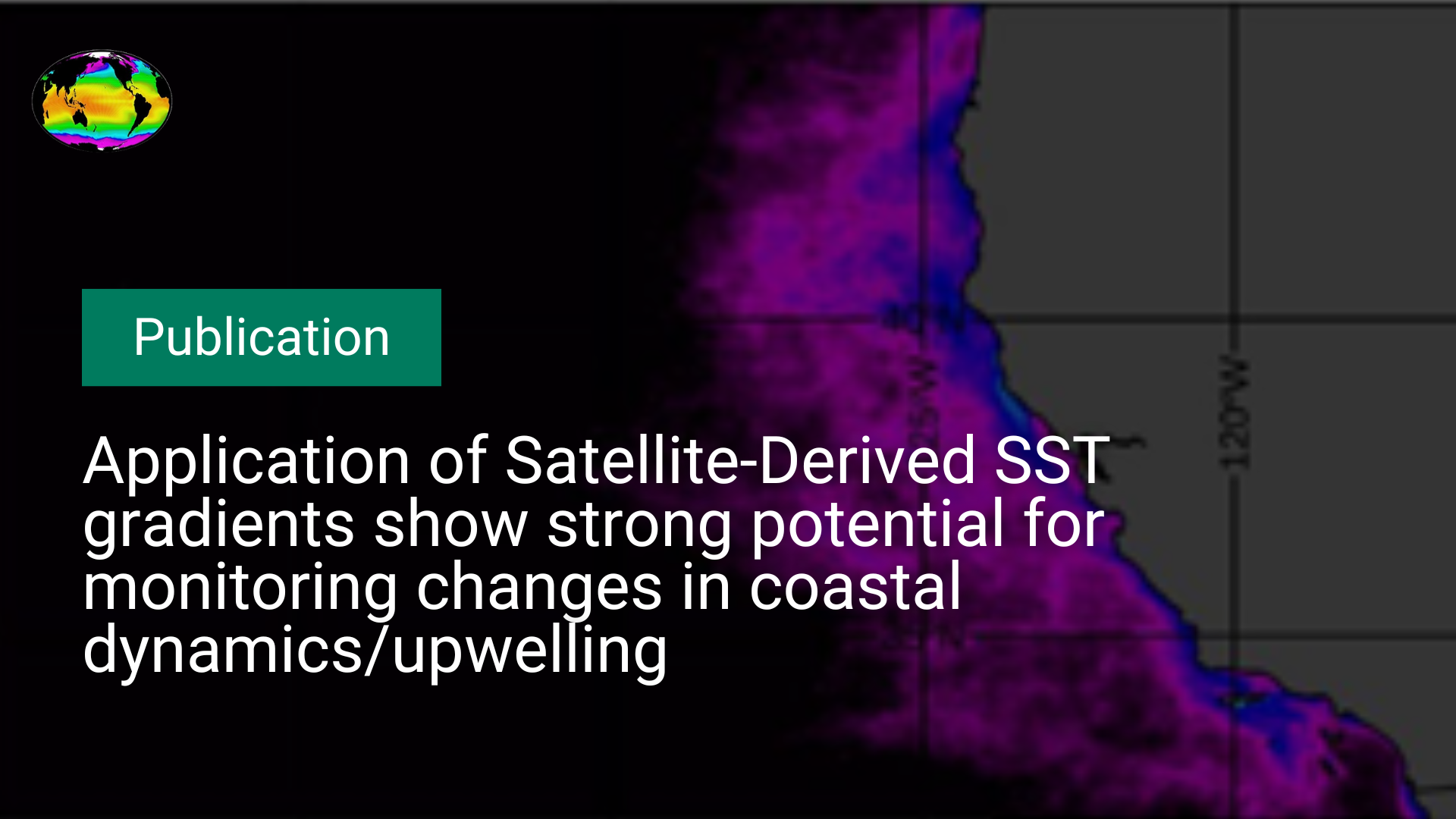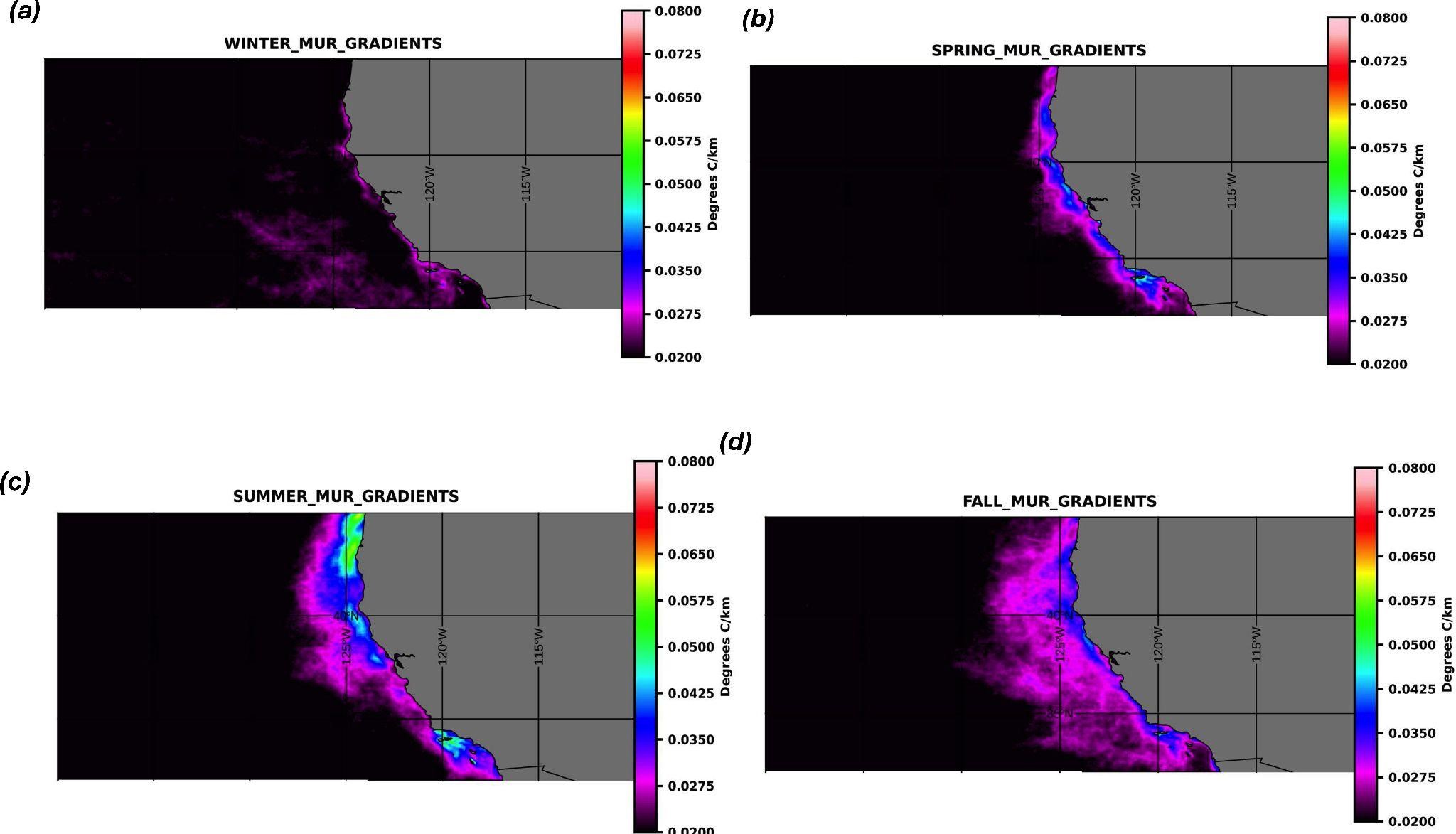
How do sea surface temperature (SST) gradients reveal patterns of coastal upwelling and long-term variability? A new study, Application and Comparison of Satellite-Derived Sea Surface Temperature Gradients to Identify Seasonal and Interannual Variability off the California Coast: Preliminary Results and Future Perspectives, demonstrates the value of satellite-derived SST gradients for tracking seasonal variability and long-term trends in coastal dynamics. The findings show clear similarities across datasets, while also pointing to areas for future improvement such as higher resolution and better cloud detection.
The study is particularly relevant for two audiences: data producers of SST products and those applying SST gradients to study coastal dynamics. For both groups, the results highlight that improvements in cloud detection are critical, and that SST gradients can be effectively used to monitor changes in upwelling, a key process shaping coastal biodiversity.
Co-authors of this publication include GHRSST Science Team members Marisol Garcia-Reyes, David Wethey, Daniele Ciani, and Jose Gomes-Valdez, with lead author Jorge Vazquez-Cuervo providing insights into the study.
Motivation for this Study
Sea Surface Temperature (SST) Gradients are critical for identifying air-sea coupling and upwelling in coastal regions. Additionally with the MODIS Aqua and Terra now provide over 20 years of high resolution sea surface temperature which are critical for identifying fronts in coastal regions. Thus, a major part of the motivation was to examine the possible trends in sea surface temperature gradients as they relate to possible trends in coastal upwelling. Another motivating factor was to compare two high resolution SST products to examine possible differences and causes.
What’s New?
The comparison of the seasonality of SST gradients derived from the UK Met Office’s Operational Sea Surface Temperature and Ice Analysis (OSTIA) and NASA’s Multi-Scale Ultra-High Resolution (MUR) sea surface temperature data set. Both data sets show similar seasonality with the maxima in gradients occurring during the summer time frame, consistent with the season of maxima upwelling. Both showed increasing trends in gradients along the coast, consistent with observed increasing trends in coastal upwelling and winds. However, a major finding was also that differences do exist between the two data sets. A major difference between the two data sets is that OSTIA incorporates Geostationary data in the analysis. This would potentially increase the number of cloud free pixels. The study highlighted that more work needs to be done to examine the impact of clouds in the derivation of SST gradients in coastal regions.
Why It Matters?
Analysing and monitoring of trends in SST gradients, and thus coastal upwelling, would be critical for studying impacts to biodiversity. The work is very encouraging in highlighting the similarity of seasonal variability and trends. Thus, overall, the results show that the application of satellite derived SST gradients for monitoring changes in coastal dynamics/upwelling is very encouraging. It also indicates that future work on improvements of resolution and cloud detection are critical.
Who Benefits?
Monitoring of long period trends and operational applications of SST gradients would be extremely important for fisheries applications and integration of the products into numerical weather forecasting and other operational applications.
The Long View
The long haul perspective would be to use the results in the study to improve the quality of a coastal SST gradient product. This would include for operational purposes as well as for applications in deriving long period trends. The maps also provide the spatial variability of the SST gradients. It is obvious that SST gradients vary significantly, especially between the coastal region and further offshore.

Figure 1. (a–d): MUR derived mean SST gradients for (a) winter, (b) spring, (c) summer, and (d) fall.

